The world’s best comfort food dishes – how many British favourites made our list?
Culinary cuddles you shouldn't miss

Ezume Images/Shutterstock
Fancy fine dining is all well and good, but there's nothing like indulging in a plateful of cosy comfort food to give your heart, soul and stomach a boost. From carb-loaded creations to meals packed with cheesy goodness, we’ve put together the ultimate collection of comforting dishes from around the globe.
Read on to discover the world’s best comfort food dishes, counting down to the most delicious of all.
We've based our ranking on the comfort food element of each dish, and on the opinions of our well-travelled (and well-fed) team. This list is unavoidably subjective.
38. Tortilla de patatas, Spain

etorres/Shutterstock
A simple but delicious staple, this Spanish potato omelette can be served for breakfast or lunch, or as a tapa with drinks. There are many folk tales about how it first came to be; it could have been created by a poor farmer's wife who had little else to feed a visiting general, or it might have been brought to Spain from Portugal by soldiers captured in a 17th-century war. The jury's out, but it's still a classic dish that can be found at restaurants and cafés all over Spain.
37. Ajiaco, Colombia

Sokor Space/Shutterstock
This wholesome soup, which is most commonly found in the Colombian capital Bogotá, features shredded chicken, herbs, corn and three different types of potato (ideally the waxy Sabanera and tender Pastusa varieties, plus papas criollas – creamy fried potatoes). Simmered until thick and fragrant, the soup is seasoned with guascas, a Colombian herb with a unique, intensely grassy flavour. Ajiaco is often served accompanied by avocado slices, capers and sour cream.
36. Dublin coddle, Ireland

Nicola_Che/Shutterstock
Dating back to the first Irish famine in 1741, coddle is a thrifty stew made using leftovers. Back then, anything available was thrown into the pot – usually root vegetables, potatoes and scraps of meat – to provide a cheap, nutritious meal. Now it tends to be a meat-heavy affair, usually made with onions, potatoes, bacon and sausages. Enjoy it with a slice of soda bread on the side.
35. Rösti, Switzerland

hlphoto/Shutterstock
Simple, soothing, buttery and fragrant, Switzerland’s crispy fried potato pancakes are supremely comforting. Originally eaten by farmers in the federal city of Bern as a filling breakfast, and traditionally enjoyed sliced into wedges, rösti are now consumed with gusto across the country. Twists on the recipe abound, from Berner rösti (with diced bacon and coarsely grated potatoes) to versions with sliced tomatoes and raclette cheese – not to mention those made with equal quantities of potatoes and meltingly soft sliced onions.
34. Meatballs, Sweden

Brent Hofacker/Shutterstock
There's no more typically Swedish dish than meatballs – despite theories that the dish may be based on an 18th-century Turkish recipe, brought back to Scandinavian shores by then-king Charles XII. Made with a mixture of minced beef and pork, these meaty treats are cooked in a rich, creamy sauce and are traditionally served with mashed potatoes and lingonberry jam. The Swedes call this type of food husmanskost, which translates as comfort food, and you'll find restaurants dedicated to it across the country.
33. Asopao de pollo, Puerto Rico

AS Foodstudio/Shutterstock
Filling, flavourful asopao de pollo is a Puerto Rican dish made with rice, chicken, green olives, adobo seasoning, garlic, tomatoes and a herby sofrito consisting of onion, garlic, coriander and peppers. While different takes on the soup-like stew exist around the country (including variations made with beef, pork, pigeon peas or seafood), it’s the version that sees pieces of chicken simmered in a tasty stock that's the most traditional – and, arguably, the best loved.
32. Pierogi, Poland
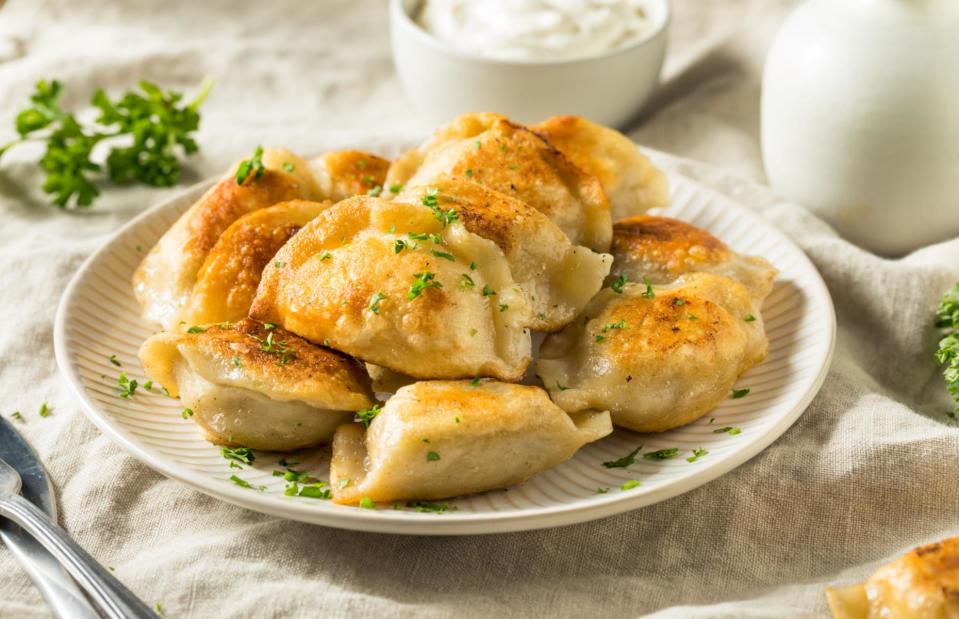
Brent Hofacker/Shutterstock
Small, crescent-shaped dumplings, pierogi have been an integral part of Polish food culture since the 13th century, and they even have their own patron saint: St. Hyacinth. There are endless fillings to choose from, but the most popular are cheese and potato, cabbage and mushroom, meat, and soft fruits. The dough is a simple mix of flour and water (sometimes with an egg added) – and, once filled, the dumplings are poached in boiling water, then fried in butter.
31. Wiener schnitzel, Austria

Brent Hofacker/Shutterstock
Some say that this breaded, fried veal cutlet originated in Northern Italy, while others say it's Austrian through and through (a recipe for schnitzel was published in an Austrian cookbook back in 1831). Either way, these days it's one of Austria's national dishes – and, if it's called wiener schnitzel, the law states it must be made with veal. It's usually served with potatoes or potato salad, with a wedge of lemon on the side.
30. Cheese fondue, Switzerland

stockcreations/Shutterstock
Fondue comes from the French word fondre, meaning 'to melt'. Although it's now associated with mountains and skiing, it possibly started out as a clever way of using up leftover cheese and stale bread. When cornflour arrived in Switzerland in 1905, it was used to help stabilise the melting cheese and white wine into a rich sauce, perfect for dunking. Fondue became wildly popular around the world in the 1970s, when the Swiss Cheese Union launched a series of adverts depicting people partying over pots of melted cheese.
29. Tarte flambée/Flammkuchen, France and Germany

Food Impressions/Shutterstock
Known as tarte flambée in France and Flammkuchen in Germany – both of which translate into English as 'pie baked in the flames' – this hearty dish is so called as it's traditionally baked close to the flaming embers of a brick oven. The dish sees thinly rolled bread dough topped with an irresistible combination of rich crème fraîche, salty bacon lardons and sliced onions. It's a speciality of the Upper Rhine Valley, encompassing Alsace in France, and Baden and the Palatinate in Germany. The moreish snack is often finished with salt and pepper, a dusting of warming nutmeg and a drizzle of peanut oil.
28. Bitterballen, Netherlands

studio vanDam/Shutterstock
So many of the world's comfort foods evolved as a way to use up leftovers. Made with scraps of meat from the weekend roast, bitterballen – Dutch meatballs – are no different. Here, a crispy, crumbed exterior envelops small pieces of beef in a béchamel sauce. Though they're rarely made in Dutch homes these days, they remain a popular bar snack and can be bought from takeaway spots with a side of chips/fries. Soft, gooey perfection!
27. Congee, China
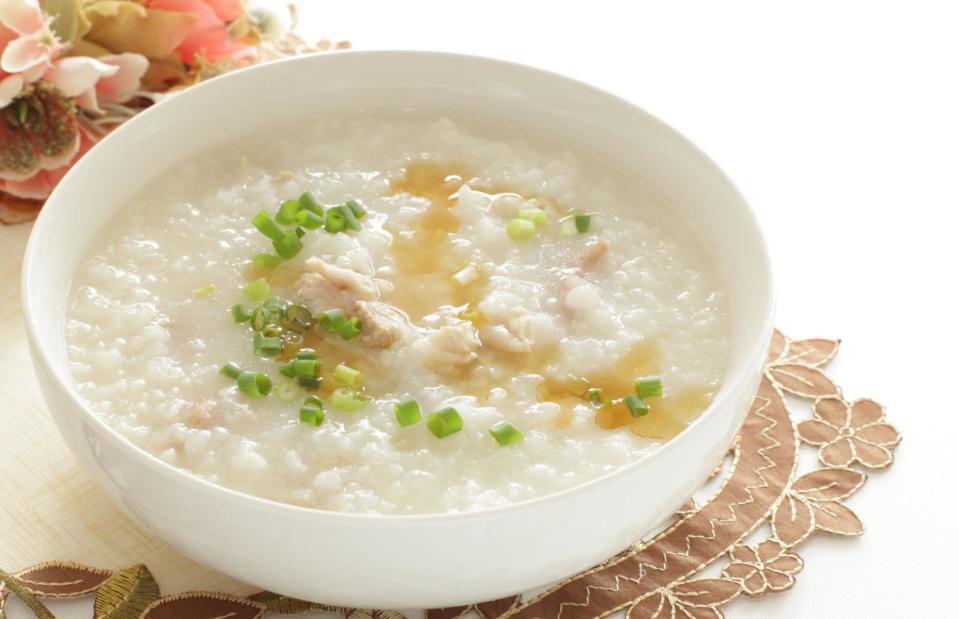
jrieka/Shutterstock
Made by cooking rice in a copious amount of water until it breaks down into a creamy soup, congee is a thick, filling porridge that can be amped up with toppings like crispy shallots, eggs or berries. It's been eaten across Southeast Asia for 3,000 years, and it's called zhou in China – congee is the Anglicised name. It's usually eaten for breakfast, but it's also a go-to food for children and sick people, as it's so easily digestible.
26. Toad in the hole, UK

Donna Gibbs-Williams/Shutterstock
Born out of a need to make meat go further in poorer households, this homely British dish originally consisted of a batter pudding studded with rump steak and lambs’ kidneys, or even pigeon (as recommended by English cookery writer Hannah Glasse in her 1747 book The Art of Cookery Made Plain and Easy). Modern-day versions of toad in the hole tend to see browned pork sausages encased in a light and airy Yorkshire pudding batter; for the ultimate comfort food meal, serve it up with buttery mashed potatoes and lashings of piping hot onion gravy.
25. Beef Stroganoff, Russia
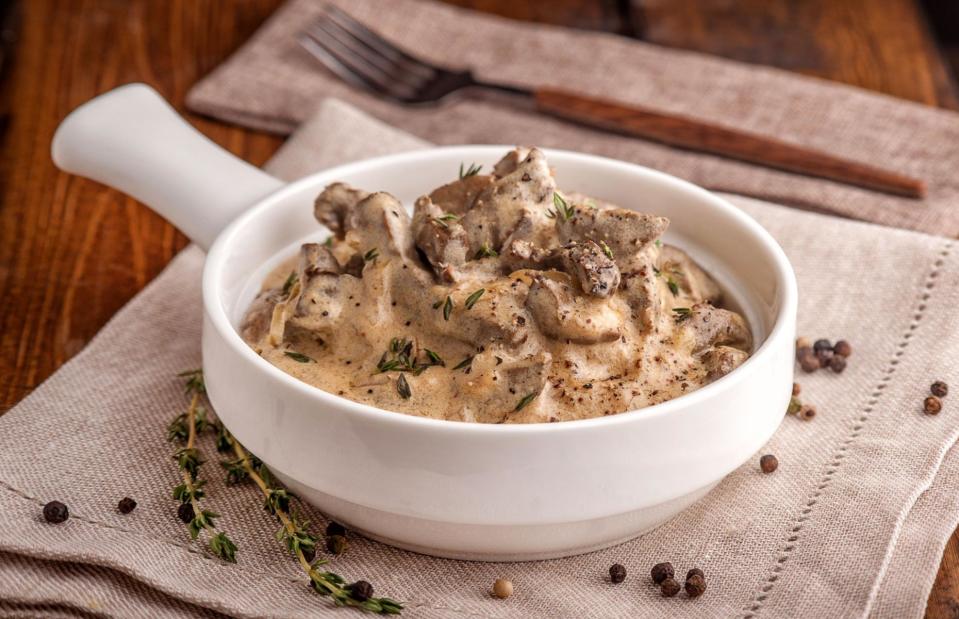
Valkyrielynn/Shutterstock
This satisfyingly creamy dish was named after Count Pavel Stroganoff, a member of Russia's 18th-century elite who spent large amounts of his time travelling across Europe. As a nobleman, he had a French chef, who is said to have created beef Stroganoff by combining mustard and onions with a Russian staple: sour cream. It had its heyday in the 1960s and 1970s, but made well (that's without the can of condensed mushroom soup), it's a recipe that's always worth revisiting.
24. Goulash, Hungary
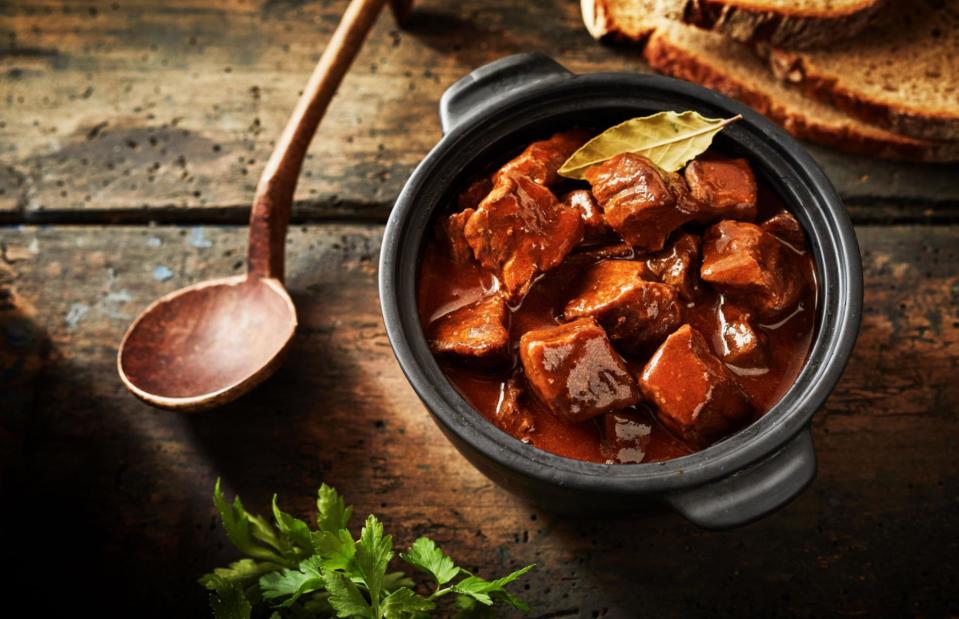
stockcreations/Shutterstock
This hearty stew of slow-cooked beef, onions and vegetables in a rich tomato sauce, all spiced up with paprika and caraway seeds, is synonymous with Hungary. Its origins have been traced back to the ninth century, when the stew was made and eaten by herders called gulyàs – and, although it's a key addition now, the paprika wasn't added until the 16th century. It's traditionally served with steamed dumplings for a warming, satisfying meal.
23. Kimchi-jjigae, South Korea
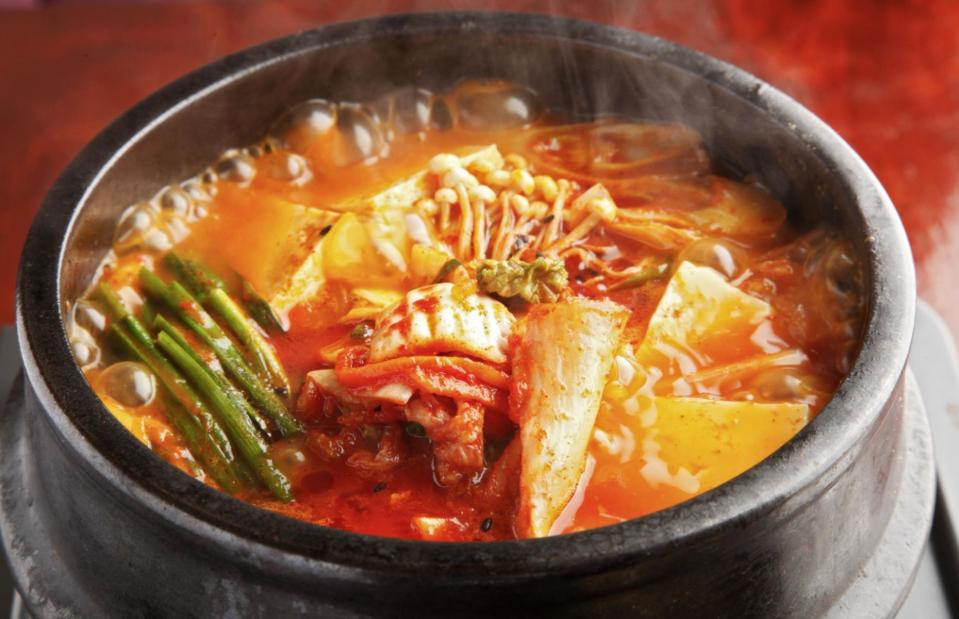
sasazawa/Shutterstock
Nothing epitomises South Korean cuisine more than its national dish, kimchi. Mentions of the fermented vegetable favourite go all the way back to the first century AD – and now, the average Korean consumes around 80lb (36kg) of kimchi every year. Made with pork belly, chilli, sesame oil and vegetables, kimchi-jjigae stew is an extremely popular comfort food.
22. Locro, Argentina

Jorge Gallego/Shutterstock
A thick stew that originated in the Andes, Argentinian locro is usually prepared with dry white corn kernels, meat (cuts of pork or beef, plus ribs and offal), vegetables, spices and robust root vegetables such as pumpkin, potatoes and yams. The dish is served hot, with plenty of bread, and it's often finished with quiquirimichi, a traditional spicy, smoky sauce rich with chillies, red peppers, herbs and spices. While the dish often appears at formal gatherings or on special occasions, it’s also very popular during the colder months.
21. Pastel de choclo, Chile

AS Foodstudio/Shutterstock
Comfort dishes don't get much more satisfying than pastel de choclo, a casserole-like pie that can be found in different forms across South America. In Chile, the dish traditionally consists of a flavourful mix of minced beef, chicken, black olives, raisins and hard-boiled eggs – and the whole thing comes topped with freshly ground corn (choclo), blended to form a thick paste. The dish is often sprinkled with sugar before being baked until golden and caramelised on the surface.
20. Sopa Azteca, Mexico

Guajillo studio/Shutterstock
We could hardly create a collection of classic comfort foods without including a chicken soup or two – and here's a Mexican favourite. A light chicken broth flavoured with tomatoes, chillies, garlic, onions and fried tortillas, sopa Azteca is believed to have originated in Central Mexico as a way to use up day-old tortillas. A hearty hug in a bowl, it comes topped with shredded chicken, more fried tortillas, avocado, coriander, Mexican cheese and lime.
19. Shakshuka, North Africa
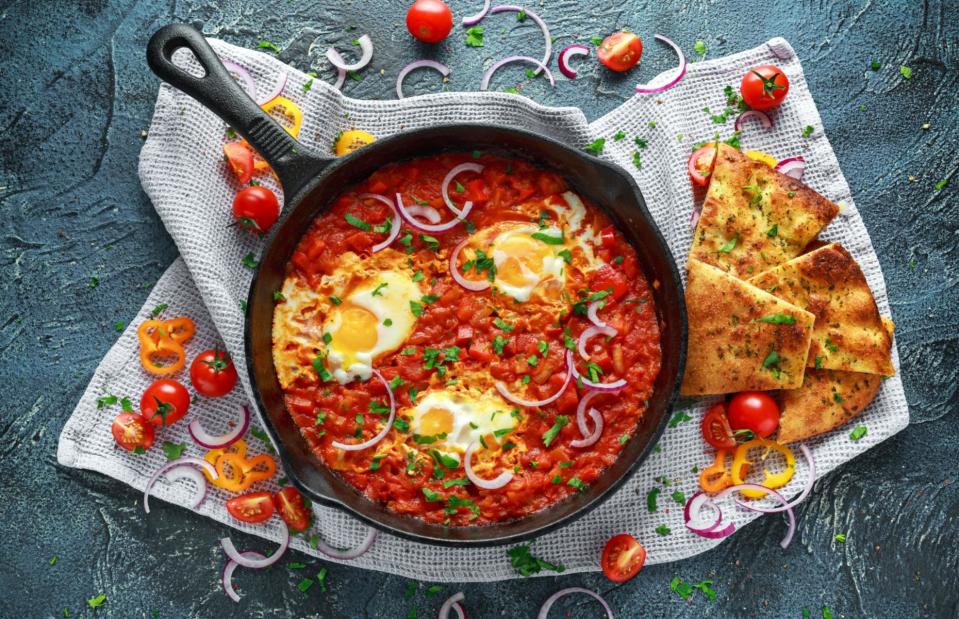
DronG/Shutterstock
Shakshuka is an Arabic word meaning 'mixture'. Some experts believe the dish originated in North Africa in the 16th century, when tomatoes were first introduced to the region from South America. It consists of a rich, spicy tomato sauce flavoured with onions, peppers and garlic, with eggs poached on top to serve. Now popular around the world, shakshuka is commonly served as a breakfast dish – but back in North Africa, it's usually eaten as an evening meal.
18. Spätzle, Germany
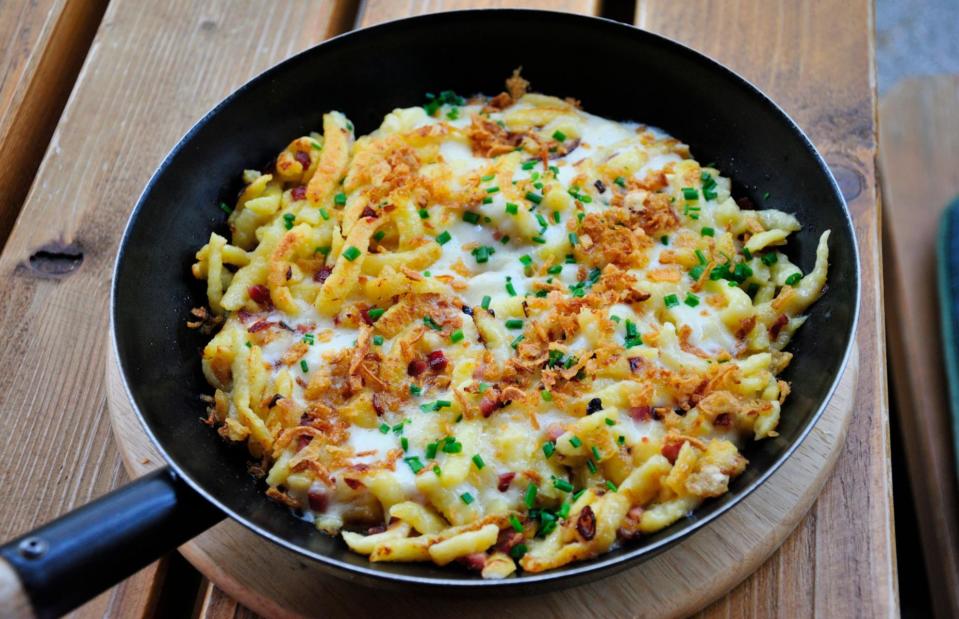
Nina Alizada/Shutterstock
A classic German comfort food, spätzle are poached, fried dumplings made from flour, eggs, salt and water. They're often served as a side dish alongside a meaty main, or as a meal in their own right, with plenty of cheese and bacon. Their name is believed to come from the German for 'little sparrows', as they traditionally resembled small birds when shaped by hand (that is, before special presses were invented in the 18th century to make the job easier). To this day, the southwestern region of Swabia is the spätzle capital of Germany.
17. Khichdi, India
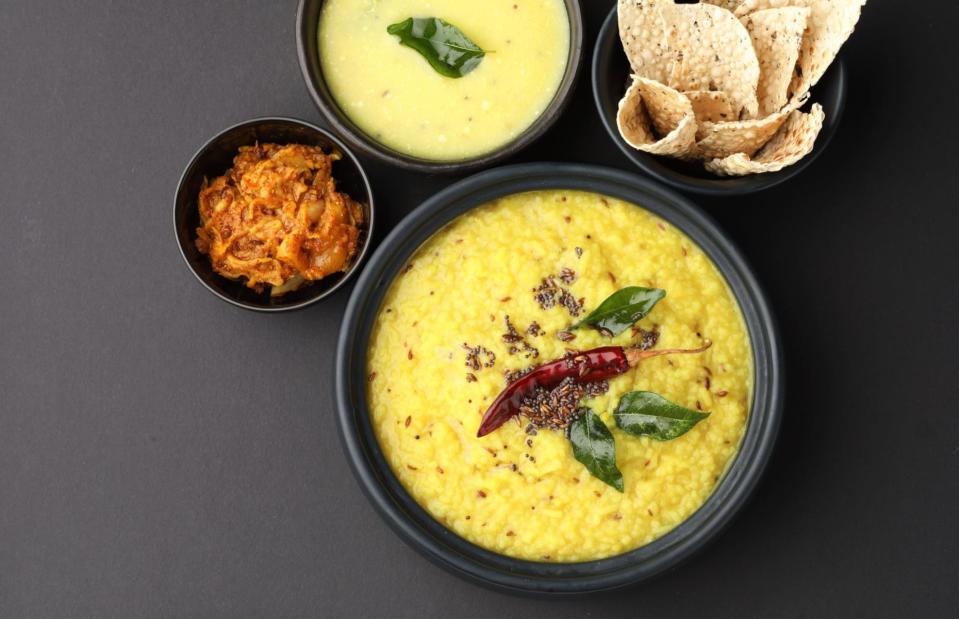
SMDSS/Shutterstock
A humble dish of rice and lentils, khichdi has been around for centuries; the earliest mention of it dates back to the 8th century. You can find endless variations on the recipe throughout the country, each one using different spices and lentils. It's usually the first solid food Indian babies are fed, and it's also given to under-the-weather adults for a comforting, healthy boost. Hearty and full of protein, it's believed to have been the inspiration for the classic British Indian dish, kedgeree.
16. Bratkartoffeln, Germany

AS Foodstudio/Shutterstock
Simple as it may be, this classic German dish is guaranteed to give you a boost. Bratkartoffeln is made by frying diced or sliced potatoes until crisp and golden on the outside – yet still soft and tender within – along with salty Bauchspeck (cured, smoked cooking bacon), melting onions and seasoning. Other ingredients are sometimes added, and the dish is often served as an accompaniment to roasted meats, fish or fried eggs. Really, though, it’s filling (and tasty) enough to be enjoyed on its own.
15. Bobotie, South Africa
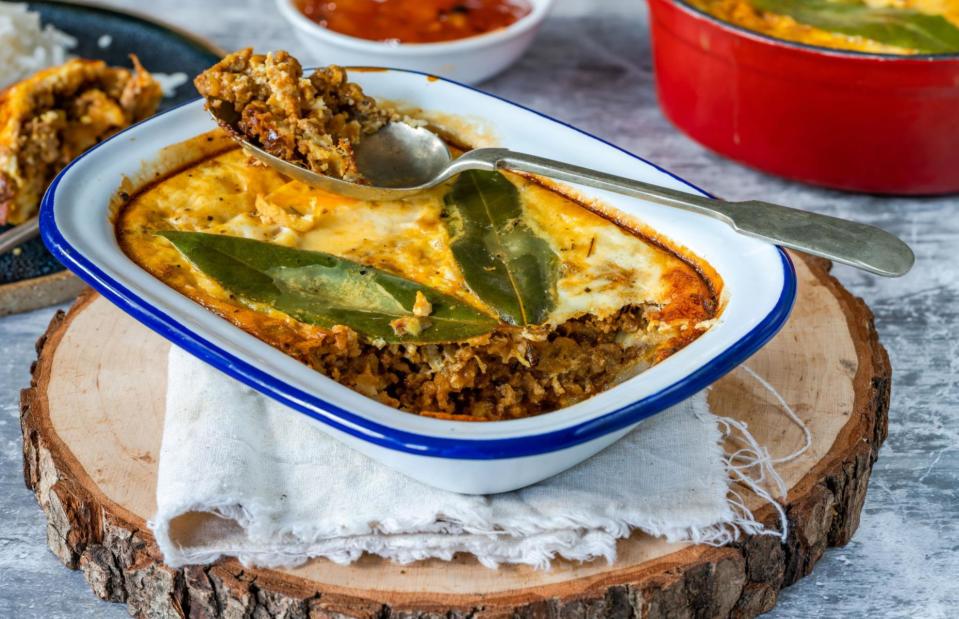
BBA Photography/Shutterstock
It's thought that the Dutch brought an early version of bobotie to South Africa, where it's now the national dish. Here, it was adapted by the Cape Malay community, who added their signature blend of spices and sweetness. The dish consists of lightly curried mince – either beef or lamb – and dried fruits, topped with a savoury egg custard. It usually comes served with turmeric rice, chutney and sambal (chopped tomatoes, onions and coriander, dressed in vinegar and sugar).
14. Curry udon, Japan

funny face/Shutterstock
Mild and warming, this saucy dish is one of Japan's favourite comfort foods. Believed to have been brought to the country by the British military at the end of the 19th century, it's more sweet than spicy, often containing ingredients like apples and bananas. It caught on with the Japanese army and navy as it was a cheap and easy way to feed the troops – and these days you can find it everywhere, from fancy restaurants to fast food joints. Add in some thick, chewy udon noodles, and you have the perfect cosy bowlful to snuggle up with.
13. Feijoada, Brazil
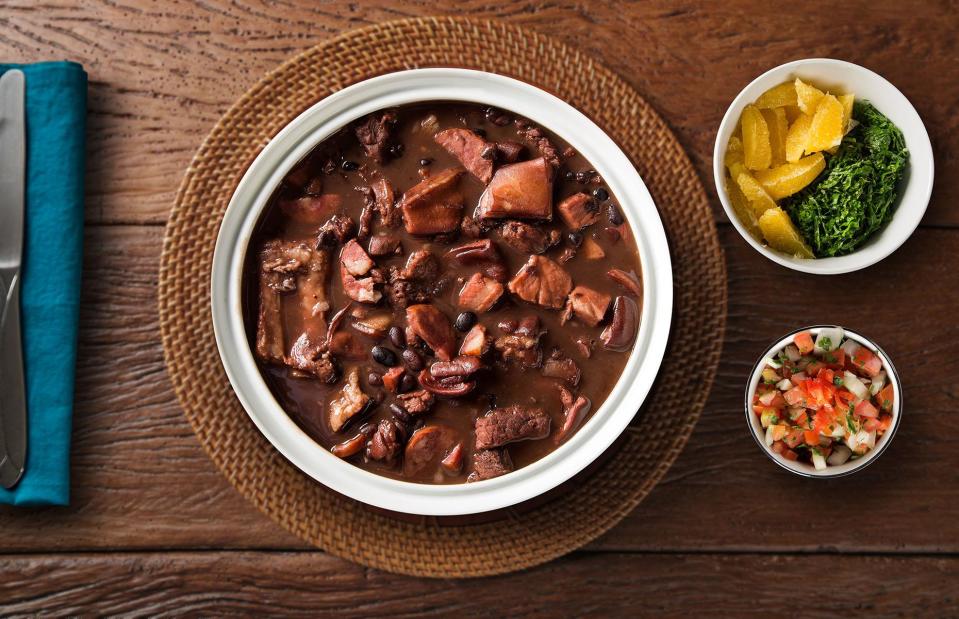
Paulo Vilela/Shutterstock
A labour of love that takes hours to cook, this hearty pork, beef and black bean stew – traditionally served with orange slices, spring greens and rice – is Brazil's national dish. Some say the Portuguese brought the original recipe across the Atlantic, while others think it was created by enslaved people who were given leftover meat and used cheap, nutritious beans to bulk it out. It was first seen on a Brazilian restaurant menu in 1833, and it's been popular throughout the country ever since.
12. Meat pie, Australia
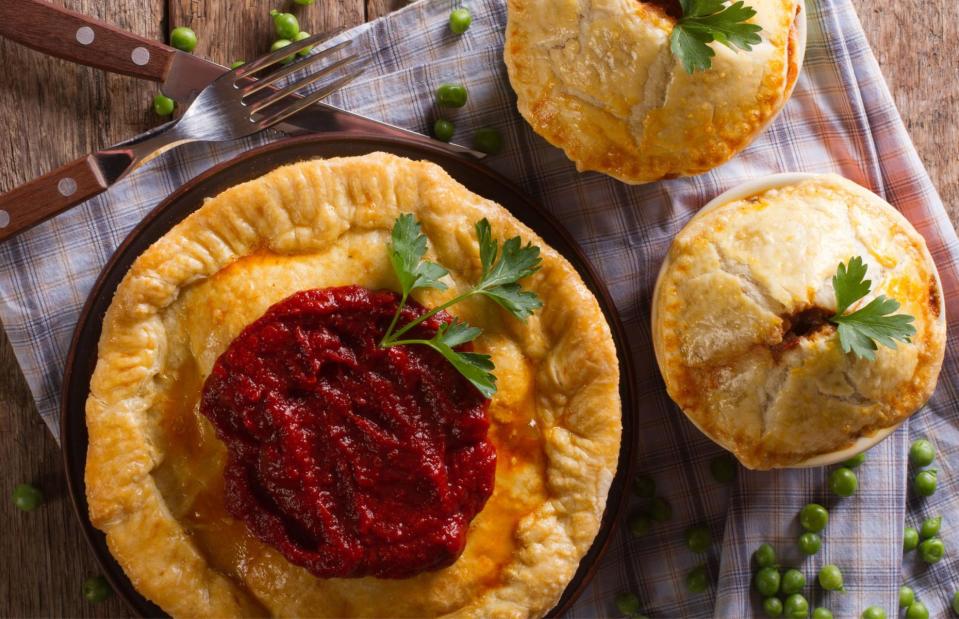
AS Foodstudio/Shutterstock
Pies may be a globally popular comfort food, but they hold a special place in the hearts and bellies of many Australians. A popular snack while watching sports, and a must on any road trip, the classic Aussie pie sees a minced beef filling encased in a shortcrust base with a puff pastry lid, and it's traditionally served with a dollop of tomato sauce. The history of the pie can be traced back to the First Fleet – ships that brought the first British colonists and convicts to Australia. These days, you’ll find pie-lined trays at every bakery and servo (gas station).
11. Poutine, Canada

Foodio/Shutterstock
A soul-nourishing, carb-loaded Canadian delicacy, poutine was first served in the 1950s in rural Québec. There are many who claim to be its creator, but one thing's for sure – if you need a lift, these gravy-smothered, cheese curd–loaded fries will help to chase your worries away. Want to make poutine at home? If you can't find cheese curds, mozzarella makes a tasty substitute.
10. Shepherd's pie, UK and Ireland
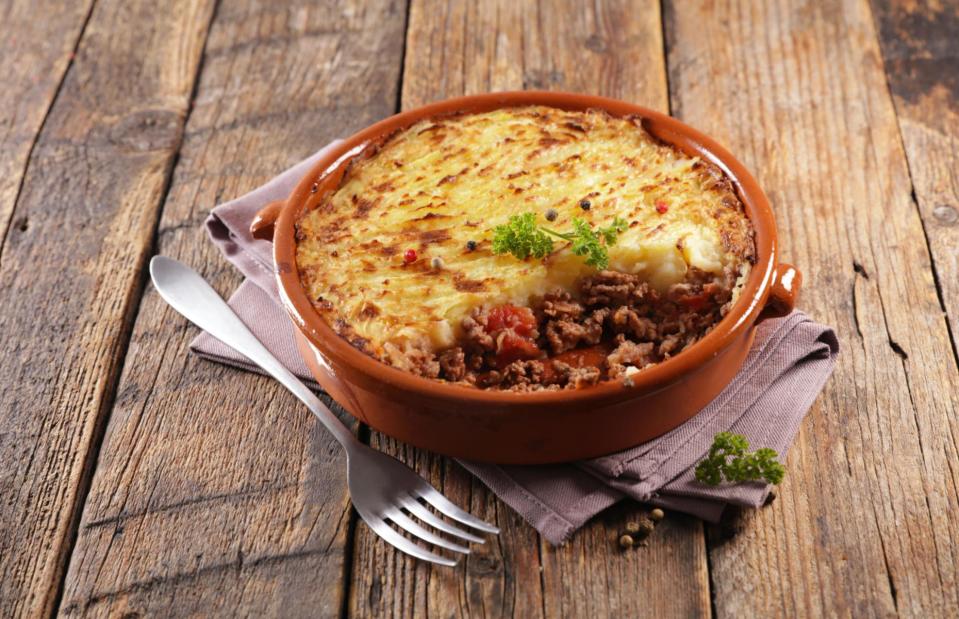
margouillat photo/Shutterstock
Shepherd's pie started out as cottage pie in 18th-century Britain, when those living in poverty often used potatoes as a way to create filling dishes using scraps of leftover meat. As the years passed, potato-topped dishes made with lamb were given the name shepherd's pie, while versions made with beef were called cottage pies. Historically, any lamb or beef used would have been chopped by hand before being cooked with root vegetables and stock. These days, both shepherd's pie and cottage pie are more often made with mince.
9. Cocido Madrileño, Spain

Julia-Bogdanova/Shutterstock
A hearty one-pot dish rich with meat and chickpeas, cocido Madrileño originated in the Castilla–La Mancha autonomous community of Spain in the medieval era. The dish is believed to have started out as adafina – a kosher meal made with chickpeas, vegetables and either hard-boiled eggs or meat. Over time, various pork-based ingredients (lard, chorizo, morcilla blood sausage and Serrano ham) were added, and the dish morphed into the cocido Madrileño that's known and loved today. It’s traditionally served in three courses: first, a bowl of flavourful stock, then the vegetables and chickpeas, and finally the meat.
8. Koshary, Egypt
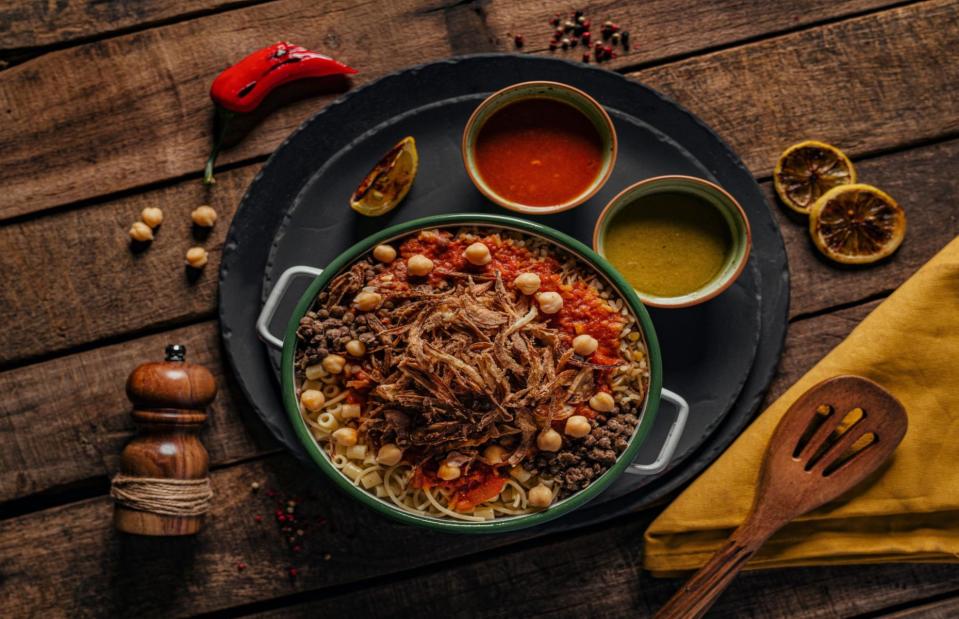
hussein fara/Shutterstock
A mixture of rice, lentils, chickpeas and pasta topped with spicy tomato sauce and crispy onions, comforting koshary is Egypt's national dish. Dating back to the 19th century, when the country was under British colonial rule, it contains a mishmash of flavours and ingredients from both Indian and Mediterranean cuisines, all thanks to the influence of foreign traders and immigrants. It was once a food of the working class but, due to its affordability and nutritiousness, it's now a beloved Egyptian delicacy that can be found everywhere from street food stalls to fancy restaurants.
7. Borscht, Ukraine
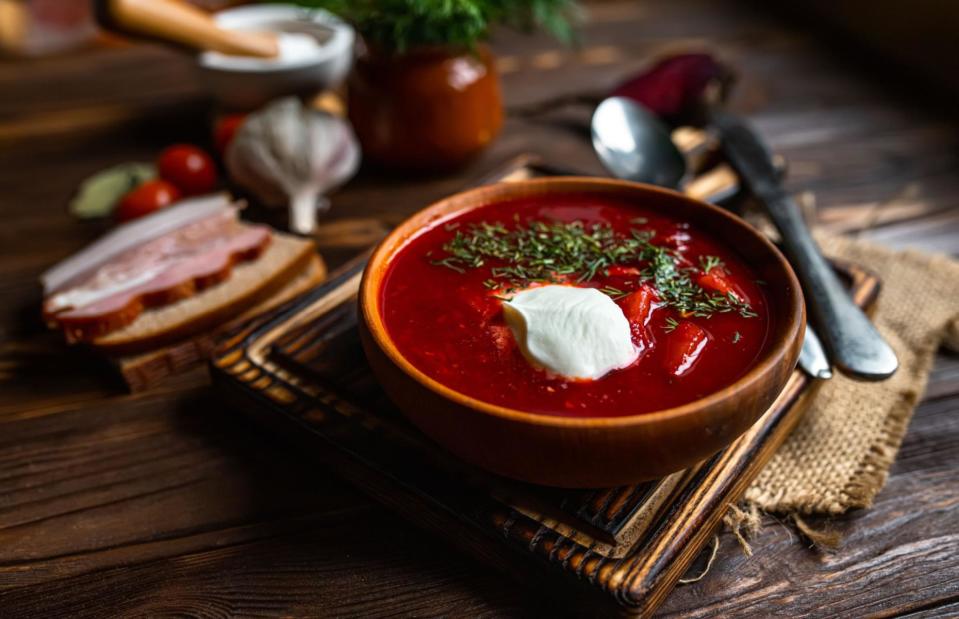
Lipatova Maryna/Shutterstock
A part of Ukraine's cultural heritage deemed worthy of protection by UNESCO, borscht is a comforting dish that brings families and friends together, and its history stretches back centuries. The name comes from an old word for beetroot, the vegetable that forms the base of this wholesome soup. Now the country's national dish, borscht has evolved over the centuries, but it still contains beetroot, cabbage and meat stock, and it often comes topped with a dollop of sour cream.
6. Mac ‘n’ cheese, USA
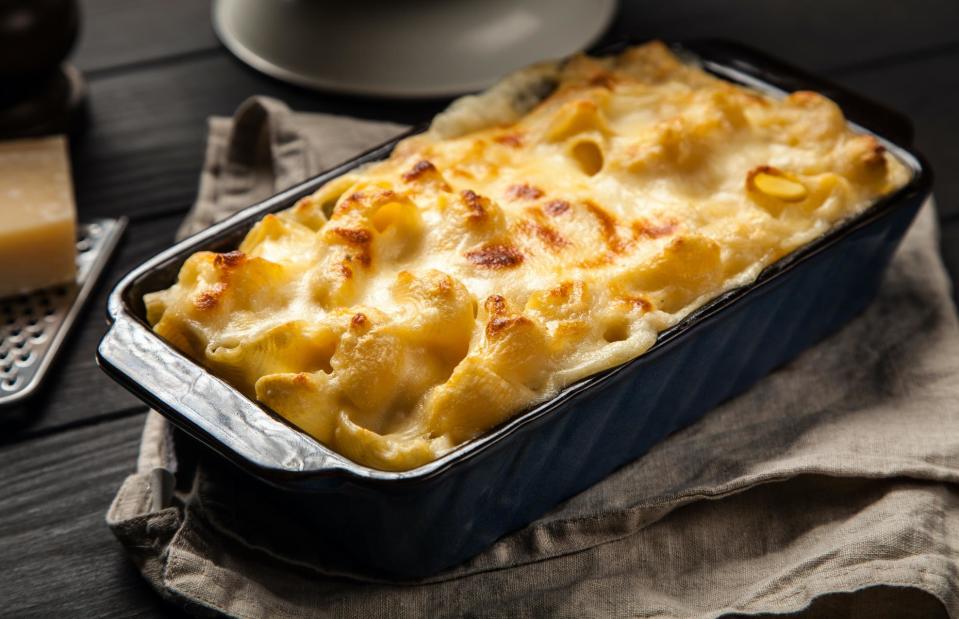
George Dolgikh/Shutterstock
The true origin of mac ‘n’ cheese is a matter of debate among culinary historians. But, regardless of where the dish was actually invented, it's a classic American comfort food, found on menus (and in homes) across the US. The story goes that it came to America via James Hemings, the talented cook enslaved by third president Thomas Jefferson; the pair travelled to Paris, where Hemings learned classic French cooking techniques. In 1937, Kraft Foods launched Kraft Dinner, a boxed version of mac ‘n’ cheese containing pasta and a sachet of cheese sauce mix. It's just as popular now, both in the US and worldwide, with around a million boxes sold each day.
5. Moussaka, Greece
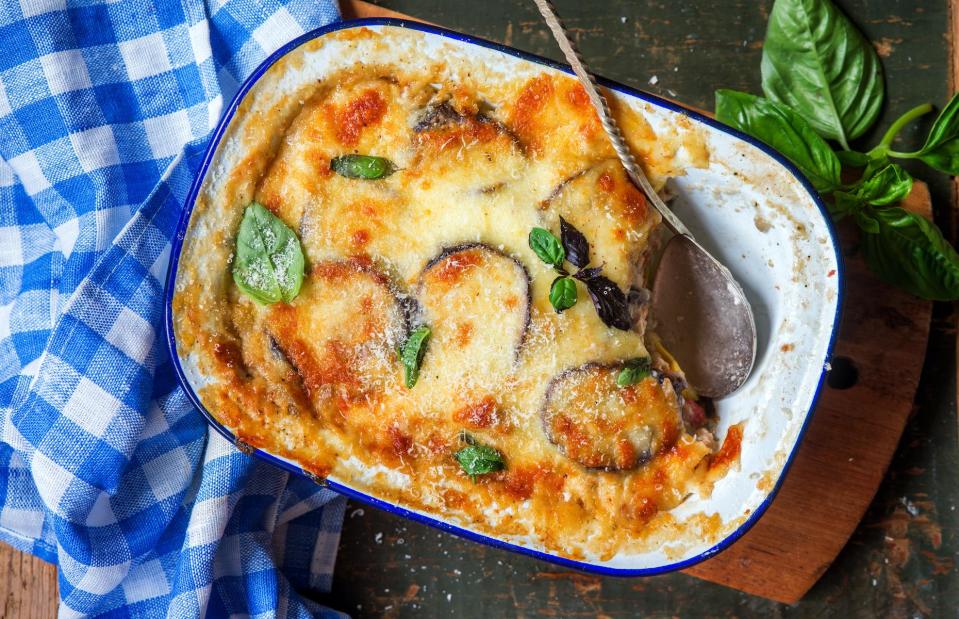
Irina Meliukh/Shutterstock
Although we may think of moussaka – a baked dish of layered aubergines, potatoes, meat and tomato sauce, topped with béchamel – as quintessentially Greek, it has a complicated history, starting out as a Turkish dish of fried vegetables and minced meat. The béchamel was introduced in the early 20th century to add a European touch, and now it's as Greek a staple as they come. Although it's widely thought of as a lamb dish, it's actually more commonly made with pork or beef (or a mixture of the two) in Greece.
4. Onion soup, France

iz000/Shutterstock
Various onion soups have been around since Roman times, but the classic French version is something special. It originated in its current form – a dish of slow-cooked, caramelised onions simmered in a rich beef broth, topped with slices of Gruyère-loaded baguette – in Paris in the mid-19th century. Popularised in the restaurants surrounding the huge 24-hour wholesale food market of Les Halles, it was eaten both by market workers and upper-class Parisians in need of a filling, hearty fix after a night at the cabaret.
3. Fish and chips, UK
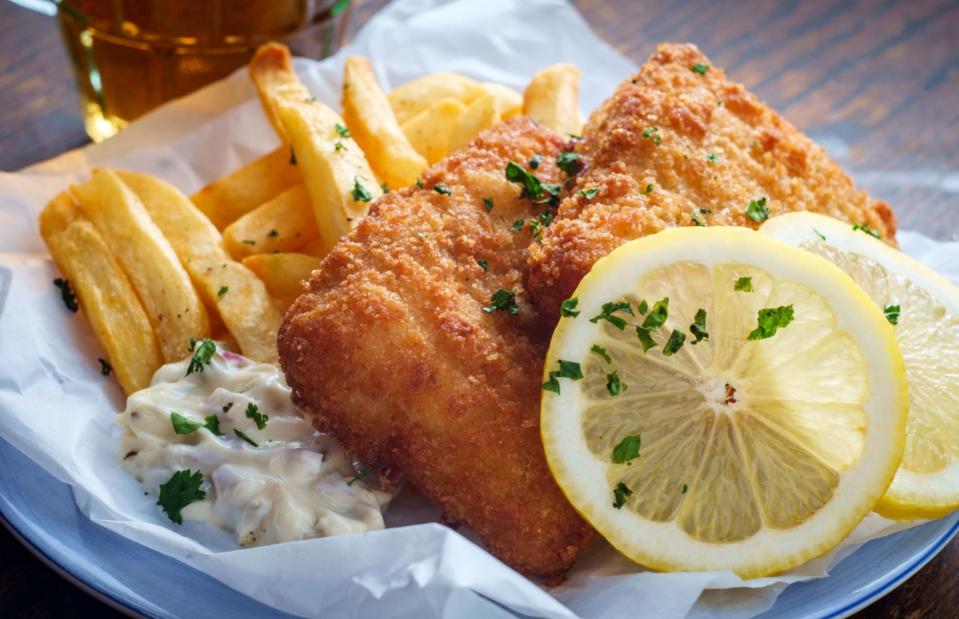
Ezume Images/Shutterstock
Fish and chips is such a huge part of British culture that Prime Minister Winston Churchill left the dish off the rationing list during World War II, claiming morale would be seriously damaged otherwise. A heavenly combination of fluffy-on-the-inside, crispy-on-the-outside chips and juicy, flaky, battered fish (usually cod or haddock), this takeaway favourite was still served wrapped in newspaper until the 1980s. Salt and vinegar are a must, while tasty accompaniments like tartare sauce and mushy peas are optional.
2. Grilled cheese sandwich, USA
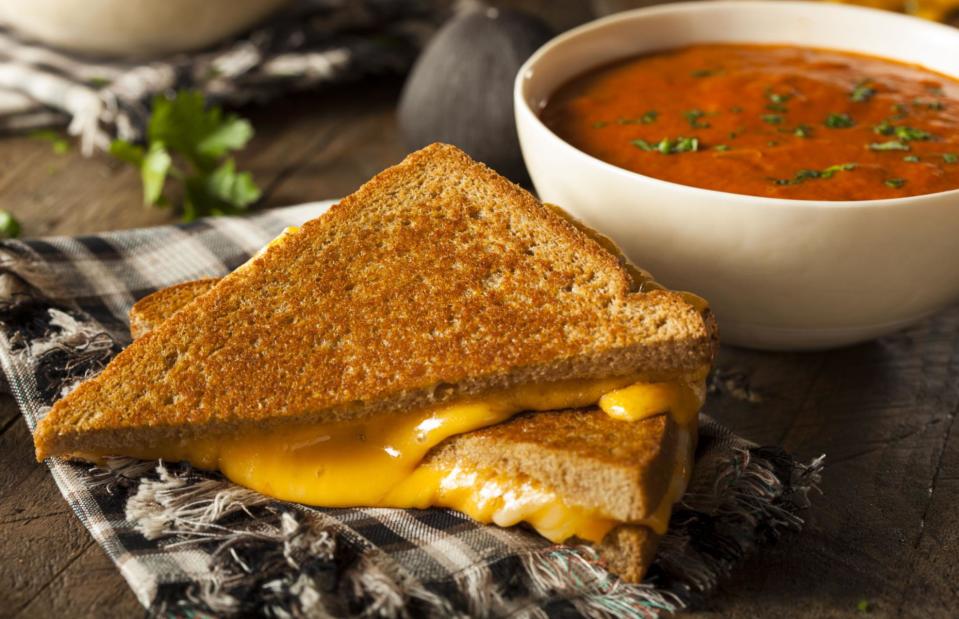
Brent Hofacker/Shutterstock
Although there are many tasty takes on cheese on toast across the world – take Welsh rarebit and croque monsieur, for instance – there's one comfort food creation that's so simple, sumptuous and downright satisfying that it had to feature near the top of our list: the grilled cheese sandwich. The popularity of the grilled cheese skyrocketed in 1949, when Kraft produced Kraft Singles cheese slices for the first time – the melty squares of goodness were paired with another modern invention, sliced bread, resulting in an instant American classic.
1. Lasagne, Italy

Esin Deniz/Shutterstock
The humble lasagne has its roots in Ancient Roman cuisine, though the original version would have been nowhere near as decadent as the rich, layered, sauce-smothered dish we know today. Lasagne is traditional in many parts of Italy, and each region has its own twist on the recipe. However, the Emilia-Romagna region of Northern Italy is where the world-famous lasagne al forno (baked lasagne) was born – for which comfort food fans across the globe are eternally grateful.
Now discover Britain's tastiest regional dishes
Last updated by Emily Shardlow-Price.


